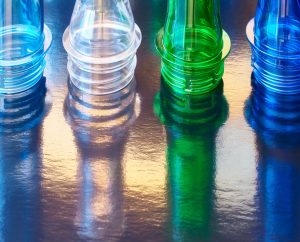In an increasingly competitive business world, product development is one of the cornerstones of business success. However, it’s not enough to simply create products; you need to take a holistic approach from concept to marketing and beyond. Therefore, this step is the key to transforming ideas into products that meet market needs and exceed customer expectations.
At Atienza & Climent, as specialists in comprehensive product development, we know the importance of this phase of production and in this guide we tell you all the ins and outs so that you understand its importance in today’s industry.

What is Integrated Product Development?
Integrated product development is a strategic methodology that encompasses the entire life cycle of a product, from its conception to its withdrawal from the market. This multidisciplinary approach merges aspects such as market research, user-centered design, prototyping and user testing to ensure excellence of the final product.
These are its fundamental elements:
– Continuous innovation: keeping an eye on the latest trends and technologies to create cutting-edge, competitive products.
– Product strategy: Develop a clear vision and a solid plan to guide the entire development process.
– Innovation Culture: foster a work environment that promotes creativity, experimentation and constant learning.
– Teamwork: integrate professionals from different areas to ensure a comprehensive and collaborative perspective on the process.
– Problem solving: identify and address challenges efficiently and effectively to keep the project on track.
– Decision making: basing choices on data and analysis to minimize risks and maximize opportunities.
This holistic approach focuses not only on the product itself, but also on its market position, financial viability and environmental impact.

Benefits of integrated product development
The integrated product development approach not only drives the creation of innovative products, but also offers a number of key benefits that contribute to the success and growth of companies.
This method addresses market needs comprehensively, from conception to commercialization, and this translates into:
– Customer satisfaction: by focusing on customer needs and wants, the end result is a product that meets and exceeds expectations.
– Improved competitiveness: the ability to adapt quickly to market demands and deliver products that stand out in a competitive environment.
– Increased profitability: by optimizing the development and launch process, costs are minimized and profit margins are maximized.
– Increased productivity: a structured and efficient approach at all stages of development leads to greater productivity and effectiveness in project execution.
– Efficiency: reduced development and time-to-market allows for faster time to market, capitalizing on opportunities ahead of the competition.
– Sustainability: the consideration of environmental and social aspects throughout the process leads to more environmentally friendly products.
– Adaptability to trends: the ability to adjust to market trends and new technologies to offer modern and attractive products.
– Strategic alignment: the integration of business strategy into the development process ensures that products are aligned with the company’s objectives.
Taken together, these benefits demonstrate how it is not only an effective methodology for creating successful products, but also a strategic investment that drives competitiveness, profitability and customer satisfaction.
Steps in comprehensive product development
It is important to carry out the phases of product development in a structured and efficient way in order to be successful.
These phases are:
– Market research: in this phase, a study of market trends and demands is carried out to identify possible opportunities and user needs to guide the design.
– User-centered design: products are created to satisfy these needs and desires, prototypes are created and tested by users.
– Prototyping and testing: User tests are performed with the prototypes to identify areas for improvement.
– Product validation: a check is made to determine if the final product meets all quality and usability standards.
– Marketing and launching: the necessary strategies are developed to promote and launch the product to the market.
Each of these phases must be carefully planned and executed to ensure its success.
Keys to Successful Comprehensive Product Development
Successful product development requires more than following a process; it involves adopting certain practices and approaches:
– Fostering an environment that promotes creativity and disruptive thinking.
– Collaboration and effective communication between various departments and disciplines.
– Conveying ideas and objectives clearly within the team and to customers.
– Customer orientation by putting the customer at the center of the process, responding to their needs.
– Optimize resources and time for an agile and effective development.
– Consider the environmental and social impact at all stages of the process to increase sustainability.
– Be aware of the latest trends and technologies to adjust strategies and products.
These principles, combined with adaptability to market trends and the study of success stories, are the keys to comprehensive and successful product development.





 by
by